Non-gamebird information
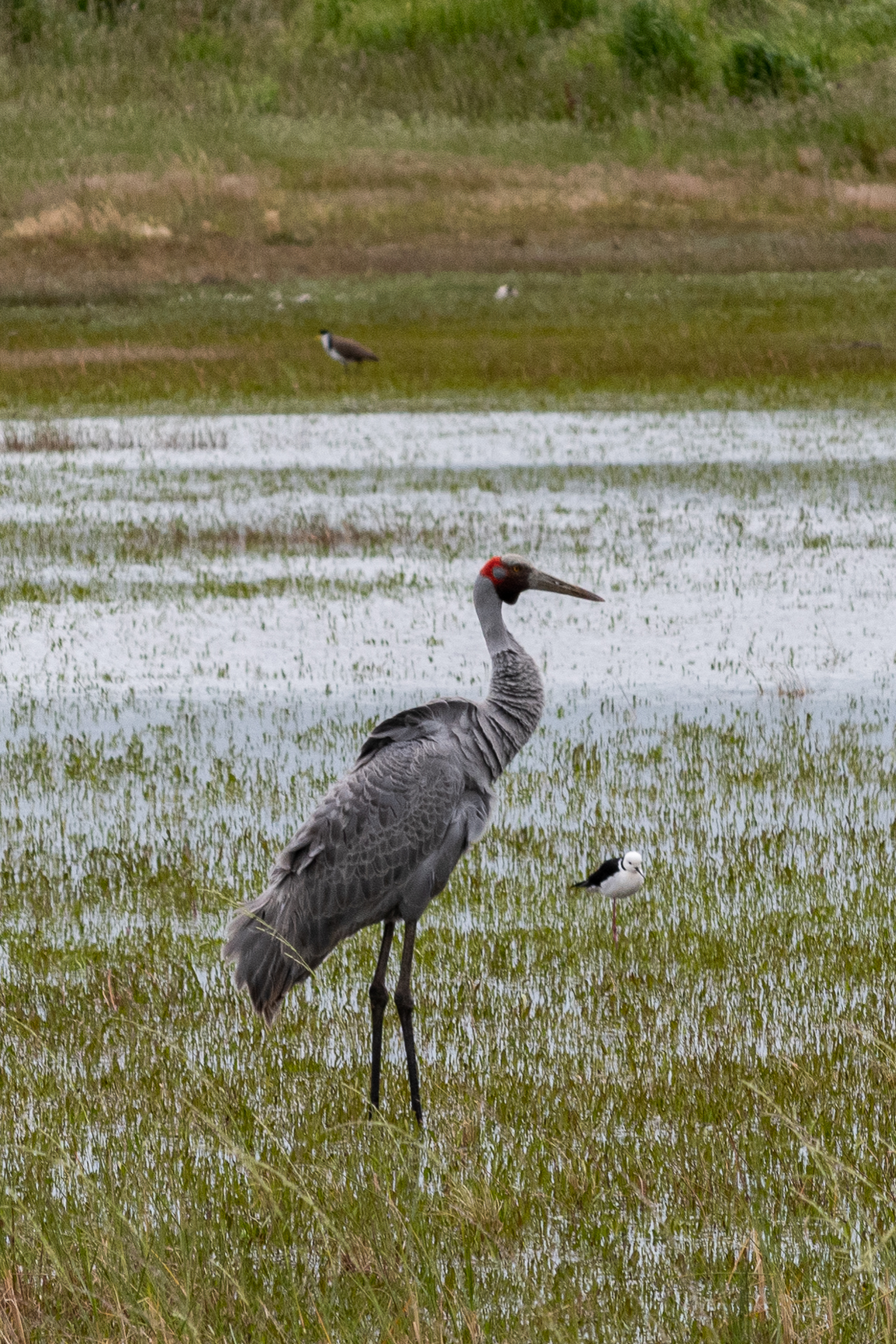 There are many species of waterbirds such as Coots, Swamphens, Grebes and Cormorants which you are likely to encounter while duck hunting.
There are many species of waterbirds such as Coots, Swamphens, Grebes and Cormorants which you are likely to encounter while duck hunting.
In Victoria, all hunters are required to pass a Waterfowl Identification Test (WIT) before they are given a hunting permit. This ensures that all hunters can adequately identify the eight species of native duck they are allowed to shoot.
The list below includes some of the waterbirds that hunters may encounter in Victoria. Most are protected and must not be taken in Victoria:
Note: Hunters may incur heavy penalties for shooting non-game species, including fines, seizure of firearms and/or equipment, loss of Game Licence and, in some instances, jail sentences.
An education video for duck hunters called Duck WISE (Waterfowl Identification, Safety, Effective and Efficient Hunting) has been developed to help all duck hunters to accurately identify game and non-game species and reduce the risk of the wrong birds being taken in the field.
Victorian birds
Status
![]()
The Avocet is fully protected in all states and territories and must not be shot.
Description
Avocets are another small bird you will come across. Mostly white with dark chocolate coloured heads, long legs and thin upturned bills.
Video footage
Video footage of the Avocets can be found here: Avocets
Distribution and habitat

The Black Swan is distributed throughout much of Australia and is particularly numerous in south-eastern and south-western Australia. Black Swans occur on most wetlands, ranging from small well-vegetated freshwater swamps to large, open waters, including bays and inlets.
Status
![]()
The Black Swan is fully protected in all states and territories and must not be shot.
Description
In flight, a large black swan with a very long slender neck with white flight feathers in wings. The flight is slow with slow wing beats.
Male and female have a similar appearance, juveniles are grey-brown with black tips to the outer white flight feathers, and cygnets are light grey, downy with grey-black bill and feet.
This species should never be confused with Australian game waterfowl and must not be shot.
Voice
A high-pitched bugle is often uttered in flight.
Images
Here are some images of the Black Swan.
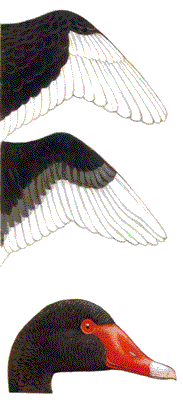
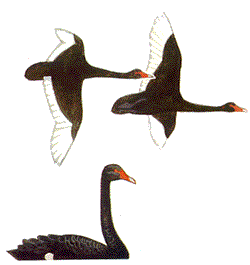
Video footage
Video footage of the Black Swan can be found here: Black Swan
Distribution and habitat

The Blue-billed Duck inhabits deep, permanent, well-vegetated swamps in south-east and south-west Australia. They are rarely found outside this range.
Status
![]()
The Blue-billed Duck is fully protected in all states and territories and must not be shot.
Description
In flight, the Blue-billed Duck patters along the surface before take-off where it adopts a tail-heavy posture with very rapid wing beats and flies low to the water's surface. In flight, the species appears as a dark bird with no colour patches or contrasting plumage. There is no pattern on the wing. The Blue-billed Duck is seldom observed to fly.
On the water, the Blue-billed Duck swims swiftly and dives repeatedly. It appears as a small, dark duck floating very low with a heavy head, compact body and, occasionally, the stiff, erect tail is visible. The male has a brilliant blue-coloured bill during the breeding season (generally September to November).
The male is in the non-breeding (eclipse) plumage for most of the winter.
Voice
The Blue-billed Duck rarely makes any sound.
Images
Here are some images of the Blue-billed Duck.
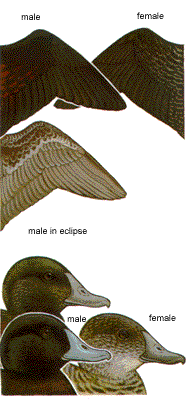
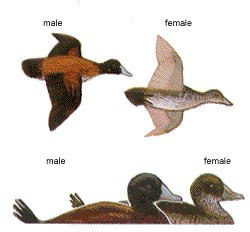
Video footage
Video footage of the Blue-billed Duck can be found here: Blue-billed Duck
Distribution and habitat

The Cape Barren Goose is distributed on islands off the southern coast of Australia and adjacent parts of the mainland on open wetlands and pastures.
Status
![]()
Cape Barren Geese are fully protected in all states and territories and must not be shot.
Description
In flight, the Cape Barren Goose is a large, grey goose, uniform in colour except for a black tail and black wing tips. The legs are large and pink and the feet are black. The species has a prominent greenish-yellow cere (fleshy covering around the nostrils).
The male and female have a similar appearance.
Voice
The male utters a rapid honk in flight.
Images
Here are some images of the Cape Barren Goose.
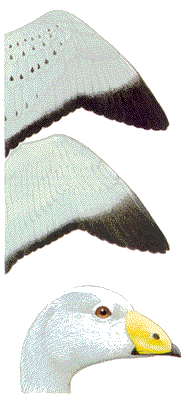
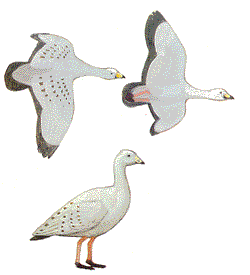
Distribution and habitat
Coots are found all over Australia in every type of wetland.
Status
![]()
Coots are fully protected in all states and territories and must not be shot.
Description
They are dark slate grey birds with a whitish bill and head shield. They can look a bit like Blue Bill ducks, but the white head shield is usually fairly obvious. Also the head is smaller and so is the bill. You'll find them often in large flocks and they mix freely with all other waterfowl.
They dive for their food like Hardheads and Blue Bills, but they are not strong flyers. When disturbed they patter over the water with rapid wing beats and keep low to the surface. They always fly with their long legs trailing out behind; a very distinctive feature, or they use their legs to walk to a stop. The overall dark colour of Coots and the white head shield are good points to remember, and keep in mind the fast wing beats and trailing legs, when they fly.
Video footage
Video footage of the Coot can be found here: Coot
Distribution and habitat
Cormorants of various species can be found in swamps and rivers throughout Australia. In the past they were persecuted for their fish eating habits, but now all of them are protected.
Status
![]()
The Cormorant is fully protected in all states and territories and must not be shot.
Description
The Great Cormorant is about twice the size of a Black Duck. The long neck, slender hooked bill and lack of any white on their wings easily identifies them. They spend a lot of time drying their feathers after they have been fishing. You will often see big mobs of them chasing a school of fish with Pelicans and other birds.
Their plumage is not fully water-proof, so they hold out their wings to dry in the sun. Other Cormorant species have white fronts and necks but none have any white on their wings. All Cormorants have long narrow hooked bills and long tail feathers.
Video footage
Video footage of the Cormorants can be found here: Cormorant
Distribution and habitat

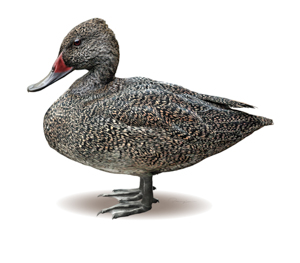
The Freckled Duck is a rare bird found in inland south-eastern Australia and the south-west of Western Australia, however, vagrants may occur elsewhere, particularly during periods of drought. Freckled Duck prefer fresh, densely vegetated waters, particularly floodwater swamps and creeks vegetated with lignum or canegrass.
Status
![]()
The Freckled Duck is protected in all states and territories and must not be shot.
Description
The Freckled Duck is grey-brown in colour and covered with fine white freckles. It is a uniformly coloured bird with little contrast and shows no wing pattern. It has a small tuft of feathers on the head and the bill has a curved, scooped appearance. In the male, the base of the bill turns a bright red in the breeding season.
In flight, the Freckled Duck is an all dark bird, paler on the belly and underwing with a large head and fairly long neck carried slightly depressed giving a hunched appearance. Freckled Duck generally fly low and circle around and around wetlands before leaving. They often mix with other species.
Voice
The Freckled Duck rarely makes any sound.
Images
Here are some images of the Freckled Duck.
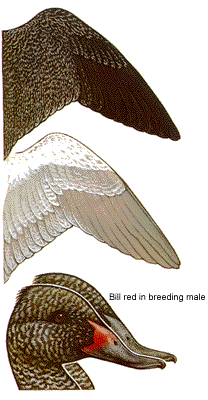
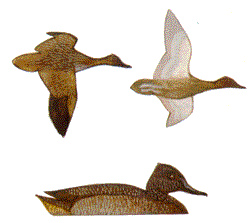
Video footage
Video footage of the Freckled Duck can be found here: Freckled Duck
Distribution and habitat
The Plumed Whistling Duck is distributed throughout northern Australia with widely scattered groups in much of New South Wales and can be found as far south as south-western Victoria. The Plumed Whistling Duck is a bird of tropical grasslands but has benefited from pastoral practices which provide dams and pasture on which to graze.
Status
The Plumed Whistling Duck is available for recreational hunting in the Northern Territory.
Description
In flight, the Plumed Whistling Duck adopts a distinctive posture with a depressed neck, trailing legs, light belly and a less obvious white rump than the Water-whistle Duck. It has short, rounded wings with slow wing beats.
On the water or on land, the Plumed Whistling Duck is a medium-sized duck with a pale body and long, buff plumes on the flank. It has a distinctive erect posture.
Voice
Whistles incessantly in flight.
Images
Here are some images of the Plumed Whistling Duck.
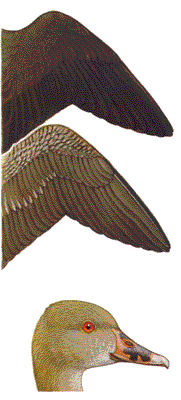
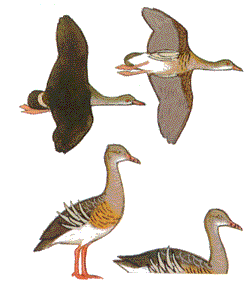
Video footage
Video footage of the Plumed Whistling Duck can be found here: Plumed Whistling Duck
Distribution and habitat
The largest of these birds is the Great Crested Grebe. It's not very common and looks about the size of a Hard Head.
Status
![]()
The Great Crested Grebe is fully protected in all states and territories and must not be shot.
Description
Their head shape, long neck and unusual crest are all fairly obvious. They don't fly very often. The head feathers are extended during breeding displays.
Video footage
Video footage of the Great Crested Grebe can be found here: Great Crested Grebe
Distribution and habitat
Various sorts of Grebes are also found in our wetlands, some more common than others. Best known is the Hoary Headed Grebe. A very small bird, less than half the size of a Black Duck.
Status
![]()
The Hoary Headed Grebe is fully protected in all states and territories and must not be shot.
Description
These birds don't have any distinctive colour or markings. The short pointed bill is a good feature to look for. They float high on the water but dive quickly when alarmed.
You can't really see the striped breeding plumage of Hoary Headed Grebes from any distance. That's a young bird nearest the camera. They are not good flyers and like Coots patter across the water with their short wings beating fast, trailing legs behind them. Most Grebes have white wing patches and white under the wings. These Grebes are such small birds that they should never be mistaken for anything else.
Video footage
Video footage of the Hoary Headed Grebe can be found here: Hoary Headed Grebe
Status
![]()
Ibis are fully protected in all states and territories and must not be shot.
Description
Although its all dark plumage is similar to that of many waterfowl, there is no way that the Glossy Ibis should ever be mistaken for a game species.
The long curved bill and long legs are typical of all the other Ibis species, and are very obvious in flight. When they're further away it does get harder to tell what they are. But notice the lack of any wing pattern or markings.
The Straw Necked Ibis are much larger birds with black and white plumage. Like the Glossy Ibis, they have curved bills and slow wing beats. They should be easy to distinguish from all game species.
The White Ibis is also unlike any game species, and so is the Royal Spoon Bill. Yellow Billed Spoon Bill should also be easy to identify.
Video footage
Video footage of the Glossy Ibis and Straw Necked Ibis can be found here: Ibis
Distribution and habitat

An introduced species, mostly found in city parks and gardens, the Mallard occasionally occurs in the wild. In Australia, the species is considered undesirable as it hybridises and competes for habitat with the native Black Duck.
Status
The Mallard is an introduced species and is not protected anywhere in Australia.
Description
In flight, the male has dark foreparts and undertail, a white breast and white underwings. The female has white underwings and a paler belly than the Black Duck. Both sexes have two white bars on the upperwing.
On the water, the Mallard is a medium-sized duck. The male has a greyish body, dark head, neck and chest, while the female has a much less distinct face stripe than the Black Duck. Both sexes have a whitish tail.
In non-breeding (eclipse) plumage, the male is similar to female but has a dull-green bill and may have traces of green on the head and chestnut on the breast.
Voice
The female has a loud raucous quack, similar to the Black Duck.
Images
Here are some images of the Mallard.
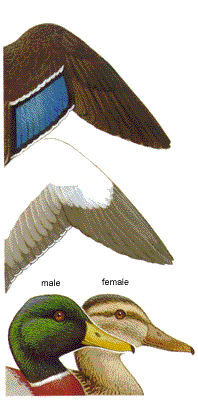
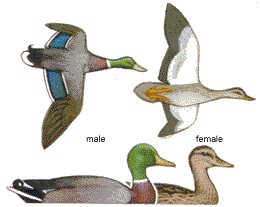
Distribution and habitat

Generally, Musk Ducks are seen in small numbers on deep, sheltered, permanent freshwater lakes and swamps throughout all of southern Australia. They sometimes occur on saline wetlands and tidal estuaries and bays.
Status
![]()
The Musk Duck is fully protected in all states and territories and must not be shot.
Description
Musk Duck are very rarely seen in flight.
On the water, the Musk Duck dives repeatedly when disturbed. It is a large black duck which floats very low with a heavy head and frequently stiff tail. The male has a pendulous lobe of skin beneath the bill.
Voice
During the mating display, the male makes a rumbling grunt followed immediately by a shrill whistle and a deep plonk is made with the feet. They also make a noisy splashing with the feet.
Images
Here are some images of the Musk Duck.
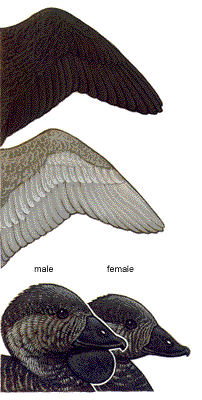
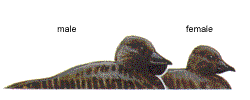
Video Footage
Video footage of the Musk Duck can be found here: Musk Duck
Distribution and habitat
Purple Swamphens are seen in many places around Australia.
Status
![]()
The Purple Swamphen is fully protected in all states and territories and must not be shot.
Description
Purple Swamphens are black and purple birds with red bills and head shields. They are larger than Coots and have longer legs. Their flight is slow and awkward legs trailing behind. There is no way that these birds should ever be mistaken for a game species.
Video footage
Video footage of the Purple Swamphens can be found here: Purple Swamphen
Distribution and habitat
Smaller birds like Stilts are found in most wetland areas.
Status
![]()
The Stilt is fully protected in all states and territories and must not be shot.
Description
Smaller birds like stilts are found in most wetland areas. They fly with their long legs trailing behind.
Video footage
Video footage of the Stilts can be found here: Stilts
Non-gamebirds from other states
Distribution and habitat

The Green Pygmy-goose occurs in deeper, more permanent freshwater waterlily lagoons throughout northern coastal tropical Australia. Its distribution is controlled by the availability of deep lagoons and is normally restricted to the coastal strip from the Fitzroy River, Western Australia, to Rockhampton, Queensland.
Status
![]()
The Green Pygmy-goose is fully protected in all states and territories and must not be shot.
Description
In flight, the Green Pygmy-goose has distinctive white patches at the base of the wing. The male has a dark throat and neck.
On the water, the Green Pygmy-goose is a small, dark duck floating high. The male has a white face patch and a dark neck. The female is similar to the White Pygmy-goose but somewhat darker and with a less distinct white eyebrow.
Voice
A shrill chirruping whistle is uttered continuously in flight or at rest.
Images
Here are some images of the Green Pygmy-goose.
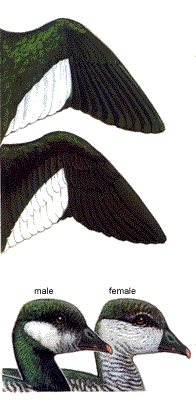
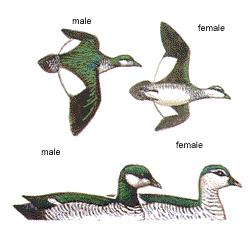
Distribution and habitat

The White Pygmy-goose occurs in deep, freshwater lagoons and swamps on the east coast of tropical Queensland between Rockhampton and Ingham.
Status
![]()
The White Pygmy-goose is fully protected in all state and territories and must not be shot.
Description
In flight, the male has a broad white wing stripe near the wing tips, a white neck, throat and body and the female has a narrow white rear margin on the innerwing.
On the water, the White Pygmy-goose is a small duck floating high. The male has a white neck and all white face with dark crown. The female is similar to that of Green Pygmy-goose but somewhat lighter and with a more distinct white eyebrow.
Voice
The male makes a loud cackle or trumpeting in flight. The female has a soft quack.
Images
Here are some images of the White Pygmy-goose.
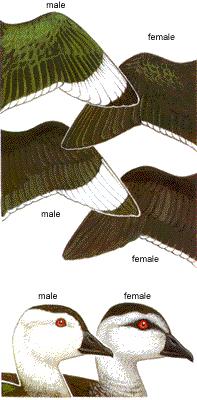
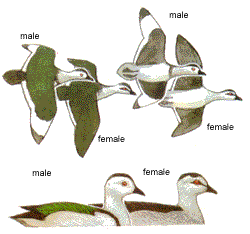
Distribution and habitat

The Magpie Goose is distributed throughout tropical Australia, particularly coastal areas, and may occur as vagrants elsewhere. Once known to occur in Victoria, the species was considered extinct in the state by the early 1900s. Efforts to re-establish the species have been successful and small numbers can now be seen regularly at sites in south-western Victoria. Small numbers can also be found on some game reserves in South Australia.
Status
The Magpie Goose is available for recreational hunting in the Northern Territory.
Description
In flight, the Magpie Goose is a large black and white goose with mainly black upperparts and contrasting white underparts. The wings are rounded with a slow flapping beat.
Voice
A load resonant honk is uttered both in flight and on the ground.
Images
Here are some images of the Magpie Goose.
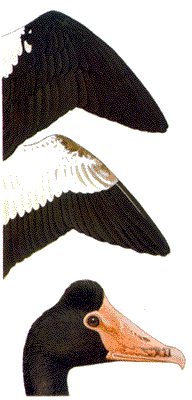
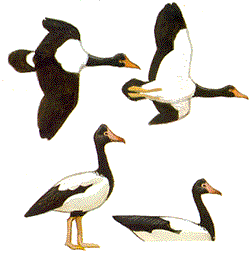
Distribution and habitat

The Water Whistle Duck is widely distributed throughout coastal tropical Australia, although, vagrants may occur elsewhere. The species prefers deep, permanent tropical lagoons.
Status
The Water Whistle Duck is available for recreational hunting in the Northern Territory.
Description
The male and female have a similar appearance. The species occurs in dense flocks, whether on land, water or in flight.
In flight, the Water Whistle Duck adopts a distinctive posture with a depressed neck and trailing legs, a dark belly, chestnut shoulders and a white rump. It has short rounded wings with a slow wing beat.
On the water or on the land, the Water-whistle Duck is a medium-sized duck with a dark body and short, white plumes on flank.
Voice
Whistles incessantly in flight.
Images
Here are some images of the Water Whistle Duck.
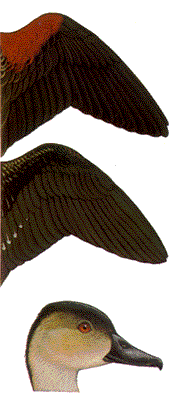
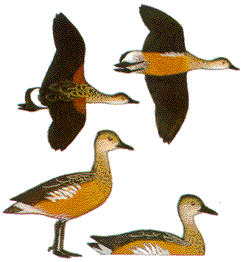
Page last updated: 02 Jun 2021